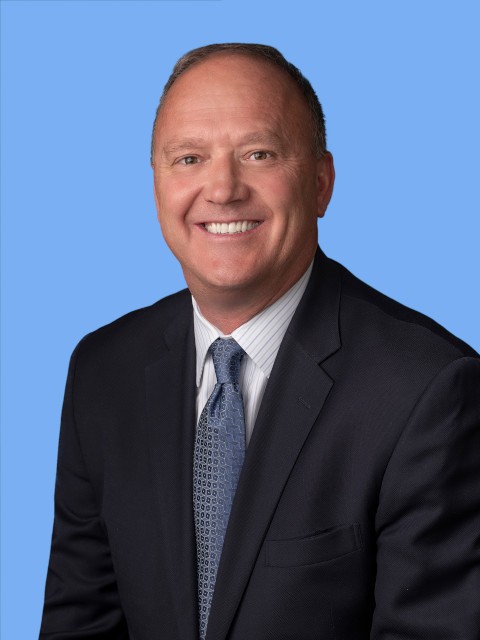As the last Baby Boomer is expected to turn 65 in 2030, this generation remains top of mind in the healthcare space as they continue to make significant impacts in the way hospitals approach care access and quality.1
A recent report uncovers the seven things hospitals should know in order to effectively address and treat the aging patient population and how to adjust their strategies for future trends.
- Shifting demographics within the adult patient population
“A combination of low fertility, increased longevity and the size of the Baby Boomer Generation have led to the rapid growth of the older population,” states the report.
As this population continues to climb in age, the sex and race ratio will begin to fluctuate. This stems from the fact that females generally have a longer life expectancy than men, and the non-Hispanic White population is expected to shrink due to falling birth rates and rising death rates.
These shifting demographics will not only increase the demand on health care service access in various communities, but it will also place greater emphasis on a hospital’s ability to meet the needs of the aging patient population with differing complex needs. - Rising prevalence of chronic diseases
Although life expectancy is projected to rise in the coming years, the overall growth of this trend will begin to slow due to stalled progress in addressing chronic diseases. The report states, “The majority of adults age 65+ have at least one chronic condition and many have multiple conditions which require several medications.”
To help reduce the impacts of these chronic diseases, hospitals and other health organizations are working to expand access to vital treatment, resources and education so that their community members, especially those 65 and older, can get checked for illnesses sooner – resulting in prompt treatment and recovery. - Increasing cost of care
In comparison to previous generations, the Baby Boomer generation has a higher likelihood of accumulating debt heading into their retirement. This barrier can result in Boomers not being able to meet rising medical costs – a figure that has risen a trillion dollars from 2009 to 2019.2
Although nearly 94% of adults 65 years or older are covered by Medicare, high out-of-pocket costs can still hinder them from receiving treatment. - Projected paid and unpaid caregiver shortages
Prior to 2020, the caregiver workforce was experiencing substantial growth. However, the impacts of COVID-19 have caused what is now the “Great Resignation.” This has ultimately led to an increased need for unpaid caregivers, such as a loved one or friend, and non-caregiver health professionals, such as geriatricians. - The inability to age in place
It is common for older adults to prefer to age in place, or stay within their home environment as they age, but several factors can hinder this from happening. An individual’s home is often not equipped with the tools to safely and successfully perform activities of daily living (ALDs) and there also presents certain health and safety risks, such as not have easy access to a caregiver or a hospital as some individuals may live in a non-urban area.
An easy compromise for the patient is having access to a hospital setting that is not only comfortable, but engaging so that the patient feels at home while being able to progress in their ADLs and other areas of recovery. - Medicare Advantage’s growth is outpacing traditional Medicare
“By 2030, it's expected that more people will be enrolled in Medicare Advantages (MA) than in traditional Medicare—or 51% of all Medicare beneficiaries,” the report notes. MA has been viewed as a positive alternative to traditional Medicare by both patients and payors. There are now double the amount of plans consumers can access compared to 2017, including zero minimum payments, giving greater access to MA and therefore greater satisfaction of benefits from patients. - Impact of COVID-19 on caring for older adults
The pandemic left devastating impacts on the older adult population. To put it into perspective, one in 100 older Americans died from COVID-19, while those 65 years or younger have a ratio of one in 1,400.3
Additionally, the behavioral impacts of COVID-19 following prolonged social isolation and ongoing negative media coverage has left many older adults feeling extreme cases of loneliness. This has been shown to be as much of a risk factor as have heart disease or diabetes.1
The report concludes by stating health leaders should come together to overcome issues surrounding workforce shortages, regulatory shifts and resource allocation. This will better enable hospitals to improve palliative, end-of-life care and long-term services for aging patients within their community.
To learn how we can help your hospital treat the aging patient population today and prepare for future trends, contact us today.
References:
- Culver, E. (2022, April 5). 7 things to know about the aging U.S. population. Advisory Board. Retrieved June 7, 2022, from https://www.advisory.com/blog/2022/04/aging-population
- Probasco, J. (2022, March 9). Why do healthcare costs keep rising? Investopedia. Retrieved June 7, 2022, from https://www.investopedia.com/insurance/why-do-healthcare-costs-keep-rising/
- Bosman, J., Harmon, A., & Sun, A. (2021, December 13). As U.S. nears 800,000 virus deaths, 1 of every 100 older Americans has perished. The New York Times. Retrieved June 7, 2022, from https://www.nytimes.com/2021/12/13/us/covid-deaths-elderly-americans.html

